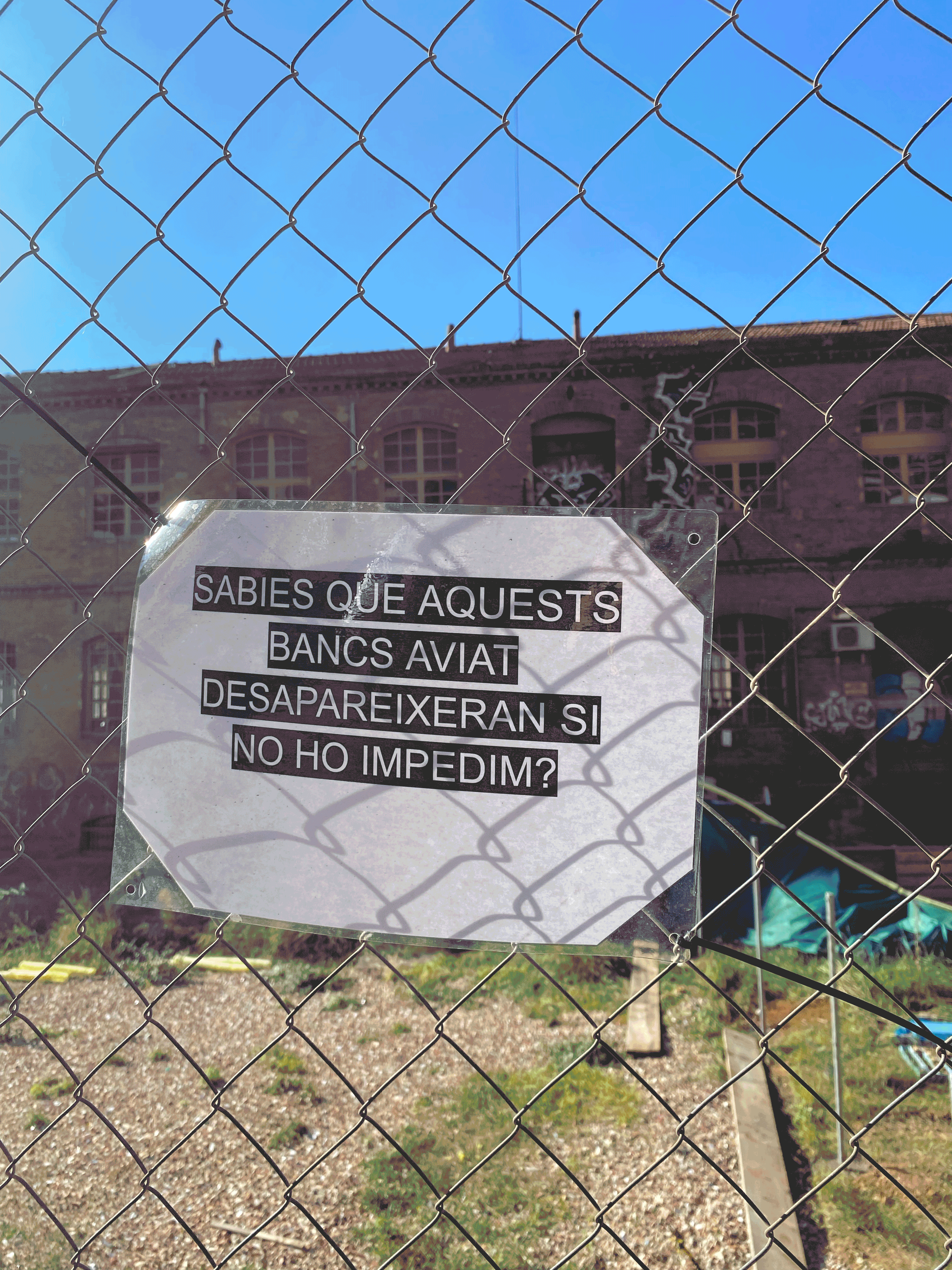Design With Others 👥
21-11-2023 - 24-11-2023
In this seminar, we learned about engaging with communities, which involves a variety of strategies and methods tailored to the specific community we are engaging with. Starting from understanding the community, building relationships, effective communications, collaboration, adaptability and evaluation of intervention.

Soil and Land 🌍🏢
The first two days of the course introduced us to Sants and El Clot, two neighborhoods here in Barcelona with strong communities inside them. After understanding the basics of communities and how to engage with them, we did a field exercise where we analyzed the different conflicts around the neighborhood (soil). As we are humans and each one has a different view, the conflicts found were different for each one. For this reason, after looking around for conflicts, we formed groups depending on the different interests we had to prepare an intervention. The second day we went to La Borda, a housing cooperative, a community that took action after the government's sloppiness and created a living, organized space. This visit and Adrià’s explanation helped us understand the land conflict. I really enjoyed this seminar because it helped us see how a good community is organized and how “powerful” they can get to be.

Our Intervention 👨👦👦
After getting to know how to work with communities to build relationships based on trust, we had to do an intervention with the affinity groups created earlier. I joined with Jorge and Sophie because our interests revolved around the organization of communities. Based on our interests, we decided to intervene in the way communities get organized. After a short talk with Adrià, we saw different organizational problems faced in communities like La Borda. These problems usually revolve around getting all voices heard. Usually, in cooperative reunions, more voices are heard than others, and this is usually not controlled. For that reason, we decided to create a tool that can help communities get organized but can also be adapted to different ones as different communities have different needs. Our tool, based on AI, was a bot instructed to organize communities. By having him pre-learn about how communities work, it was easier to make him organize and adapt. The use of it will consist of answering different questions about the state and nature of your community and following the bot’s recommendations on organization.

How will the intervention be applied??
The intervention plan for implementing Community Builder at La Borda focuses on enhancing their cooperative housing model in Barcelona. It begins with an assessment of member needs and tailors the Community Builder platform to strengthen decision-making and resource management. The plan includes training La Borda's members on the platform, integrating decision-making tools into meetings, and establishing communication and feedback mechanisms. Regular monitoring and adaptation of the platform will ensure it meets the evolving needs of the community. The goal is to make La Borda more resilient and sustainable, fostering a more inclusive, democratic, and harmonious living environment.
Final Reflections
In the Design With Others course, I engaged in an in-depth study of the intersection between community dynamics and design principles. My fieldwork in the Sants and El Clot neighborhoods highlighted the often-overlooked challenges and disputes present in these communities, particularly the neglect of shared spaces. This aligned with my interest in the impact of community engagement on the upkeep and appreciation of common areas. The course also included visits to community-led projects, such as a local garden and a biomaterials' hub, which were particularly inspiring in their demonstration of communal cooperation on crucial issues like sustainable food practices and environmental conservation. These experiences offered valuable insights into the importance of community participation and the benefits of shared learning and skill development. A major learning point was the necessity of aligning design projects with the needs and aspirations of the community, as exemplified by our group project on integrating ecological elements like bees and plants into urban areas. The use of conflict mapping emerged as a key tool, aiding in identifying stakeholders and developing more targeted design approaches. Overall, the course taught me the importance of designing with communities, highlighting the need for immersive collaboration to ensure design projects are not only effective but deeply meaningful to the communities they serve. This principle is something I plan to carry forward into my master's program and future design endeavors.